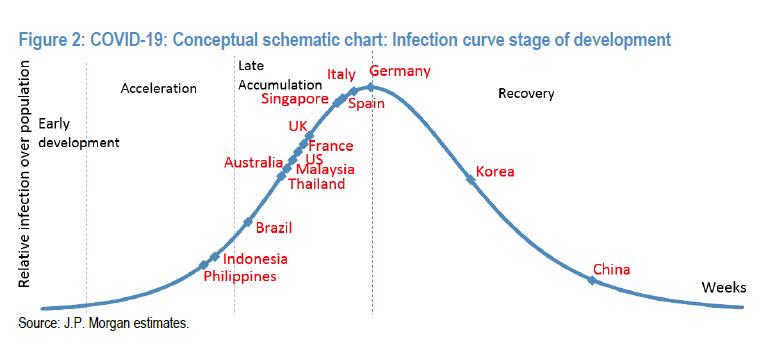1.1 million U.S. soldiers are subjects of a dubious psychological experiment
“In the 30 years that followed World War II, the federal government spent over $1.2 billion to fund psychological research, and much of this research was funded through the military services.” (Martin E.P. Seligman and Raymond D. Fowler, Comprehensive Soldier Fitness and the Future of Psychology, American Psychologist, 2011: cited in Independent Review Relating to APA Ethics Guidelines 2015, Ref. 62)
The scourge of psychological engineering
“The psychological school of behaviorism sought to replace the idea of human beings as autonomous agents with the “scientific” view of them as biological organisms, responding to external stimuli, whose behavior could be modified by altering their environment.
In 1971, the psychologist B.F. Skinner expressed the hope that the vast, humanly created problems defacing our beautiful planet (famines, wars, the threat of a nuclear holocaust) could all be solved by new “technologies of behavior.” (Tamsin Shaw, The Psychologists Take Power, The New York Review of Books, 2016)
Professor Noam Chomsky dissected the claimed “scientific basis” of psychological behaviorism in his reviews of Skinner’s books: Verbal Behavior (1957) and Beyond Freedom and Dignity (1971):
“A close analysis shows that [Skinner’s] speculations are devoid of scientific content and do not even hint at general outlines of a possible science of human behavior. Furthermore, Skinner imposes certain arbitrary limitations on scientific research which virtually guarantee continued failure.”
“Skinner confuses “science” with terminology. He apparently believes that if he rephrases commonplace “mentalistic” expressions with terminology derived from the laboratory study of behavior, but deprived of whatever content this terminology has within this discipline, then he has achieved a scientific analysis of behavior. It would be hard to conceive of a more striking failure to comprehend even the rudiments of scientific thinking… (The Case Against B.F. Skinner, 1971)
Captive populations serve as human guinea pigs
Government-financed, dubious “behavior modification” techniques were largely tested on captive human populations in prisons and psychiatric hospitals who were unable to refuse. Psychologists used “behavior technologies” to induce either desirable behavior or pathology. Psychologists and psychiatrists conducted diabolical mind-control experiments and heinous psychological torture experiments mostly financed by military and/or CIA contracts. (Read AHRP compilations CIA Mind-Control Experiments and CIA Torture Experiments)
In the wake of the devastating Independent Review Relating to APA Ethics Guidelines (2015) corroborating the APA as the facilitators of torture, Psychologists for Social Responsibility urged the APA to reconsider psychologists’ alignment with, and dependency on the military and intelligence agencies:
“Psychologists have a duty to recognize and examine how decades of dependency on the military and intelligence agencies for employment, funding, and stature have influenced our entire profession, in ways that have never been adequately examined.”
Instead of distancing themselves from the military, prominent academic psychologists expanded their active role in the military. Skinner’s contemporary torch bearer of psychological behaviorism is psychologist Martin Seligman, a former president of the APA (1998) who heads the University of Pennsylvania’s Positive Psychology Center. Seligman founded the theories of “Learned Helplessness,” which made his reputation, and “Positive psychology.”
“Commonly known as the founder of Positive Psychology, Martin Seligman is a leading authority in the fields of Positive Psychology, resilience, learned helplessness, depression, optimism and pessimism.”
“Since 2000, his main mission has been the promotion of the field of Positive Psychology. Dr. Seligman is expanding Positive Psychology to education, health, and neuroscience, and has applied his research to groups like teachers and students, the U.S. Army, athletes, and every-day people. His goal is to make the world happier. ” (U. Penn. website)
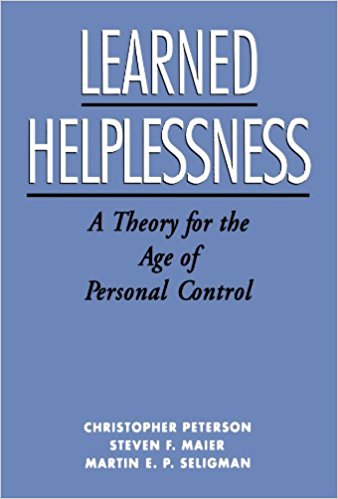 Seligman developed his “learned helplessness” theory by conducting experiments on dogs who were subjected to repeated painful electric shocks which they could not avoid. As a result of such conditioning, even when the dogs were able to escape, they gave up trying. (Seligman. Helplessness, 1992)
Seligman developed his “learned helplessness” theory by conducting experiments on dogs who were subjected to repeated painful electric shocks which they could not avoid. As a result of such conditioning, even when the dogs were able to escape, they gave up trying. (Seligman. Helplessness, 1992)
Seligman’s cruel “learned helplessness” techniques — more accurately “induced helplessness” techniques — served as the primary psychological component in the brutal torture protocol used by the CIA and Pentagon in the interrogation of suspected 9/11 terrorists. A cadre of psychologists played a pivotal role in planning and overseeing the torture protocol, euphemistically labeled “enhanced interrogation.” Psychologists utilized both psychological and physical experimental torture techniques on imprisoned suspected terrorists at Guantanamo and elsewhere to induce utterly debilitating mental breakdown.
Indeed, the Justice Department Office of Professional Responsibility Report (2009) confirms that the goal of the government’s prisoner interrogation program was to drive prisoners into a psychologically devastated state through torture: “The express goal of the CIA interrogation program was to induce a state of ‘learned helplessness.’”
The participating psychologists were supported by the American Psychological Association (APA) whose leadership colluded with the CIA and even changed its professional Ethics Guidelines to accommodate torture. (Independent Review Relating to APA Ethics Guidelines…2015)
Notwithstanding his disavowals: “I have never and would never provide assistance in torture. I strongly disapprove of it…I never intended for the government to use my ideas for torture” Dr. Seligman hosted the initial brainstorming meeting (December, 2001) that the New York Times cited as the “start of the program.” (Scott Shane. 2 U.S. Architects of Harsh Tactics in 9/11’s Wake, 2009); and he delivered “scientific” presentations at meetings attended by CIA, military, and law enforcement officials. These meetings were arranged by CIA’s director of Behavioral Sciences Research. Among the 50 to 100 SERE officials who attended were psychologists James Mitchell and his partner in the business of torture, Bruce Jessen. Dr. Seligman described the timing of the meetings as “coincidental.”(Jane Mayer. The Dark Side, 2008)
The authoritative Independent Review Relating to APA Ethics Guidelines (2015) by David Hoffman, a former federal prosecutor who exposed how financial incentives generated corrosive professional conflicts of interest that undermined the moral integrity of the American Psychological Association, disputes Seligman’s “coincidental” claim.
“it would have been difficult not to suspect that one reason for the CIA’s interest in learned helplessness was to consider how it could be used in the interrogation of others. (p. 49)… On balance, it seems difficult to believe that Seligman did not at least suspect that the CIA was interested in his theories, at least in part, to consider how they could be used in interrogations.”(p. 164) (Hoffman Report)
Professor Shaw draws the conclusion that: “Plausible deniability here is strained by the fact that the person in question is an expert on human behavior employed by the military. A failure to imagine the likely consequences of his actions would seem to call into question his qualifications for that position.” (Shaw. The Psychologists Take Power, 2016)
Whereas other professional associations condemned the use of torture and prohibited its members from being present, psychologists engaged in, and profited from torture. The failure of psychology as a profession to oppose torture demonstrates moral and professional turpitude. (Read AHRP compilation re: CIA torture, e.g., APA Collusion…; Role of Behavioral Science Consultation Teams…; Profitable Torture Business…; “Smoking Gun” collusion by APA…; 10-year Timeline psychology, torture, & the APA)
Seligman’s “learned helplessness” techniques have been largely discredited by professional intelligence agents; as they have proved ineffective as a method for obtaining useful intelligence. Indeed, the Senate Intelligence Committee Report on CIA Torture (2014) concluded:
“enhanced interrogation techniques” — a.k.a. torture — yielded no information that could not have been otherwise obtained and in many cases yielded faulty intelligence on crucial intelligence issues.“
However, as Prof. Shaw notes, the recipients of funding from the military have a financial incentive to provide findings that the military seeks — which is why so much of military research is tainted, and deemed to be “junk science”:
“when the defense industry supplies hundreds of millions of dollars a year to support research (both basic and applied) that is related to military psychology, there is always a potential conflict of interest between supplying results that the military wants and producing objective science… In spite of the clear lack of effectiveness of their “enhanced interrogation techniques,” Jessen and Mitchell continued to apply them and were eventually paid $81 million for doing so.” (The Psychologists Take Power, 2016)
“Positive Psychology” — a shift in emphasis from pessimism to optimism
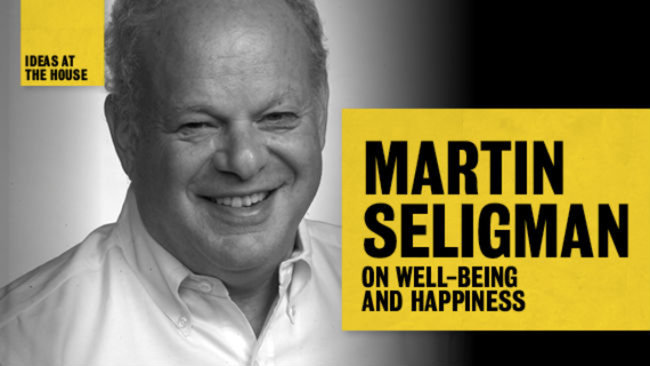 Optimism pervades the current literature about moral psychology. The shift from pessimism to upbeat optimism is influenced by the school of Positive Psychology, founded by Martin Seligman who set aside his pessimistic theory of “Learned Helplessness” & launched “Learned Optimism” with his books, Authentic Happiness (2004) and Learned Optimism (2006).
Optimism pervades the current literature about moral psychology. The shift from pessimism to upbeat optimism is influenced by the school of Positive Psychology, founded by Martin Seligman who set aside his pessimistic theory of “Learned Helplessness” & launched “Learned Optimism” with his books, Authentic Happiness (2004) and Learned Optimism (2006).
“Positive psychology” has proven highly lucrative for its proponents. Its slick marketing success achieved its current fad status in popular psychology. Critics point to positive psychology’s disregard for the harsh societal realities, like poverty and inequality; and its growing tendency to promote commercially appealing “positive” claims without scientific support. Military and academic departments of psychology have jumped on the bandwagon as tens (possibly hundreds) of millions of dollars are awarded in grants.
In February 2010, Seligman was awarded a $31 million no-bid “resilience training” contract for his Penn Resiliency Program (PRP) involving students; it served as the “scientific” basis for the military’s Comprehensive Soldier Fitness (CSF) experimental initiative. The purpose of PRP as described by Dr. Seligman:
“The PRP sought to increase students’ ability to handle day-to-day stressors and problems that are common for adolescents. This program was designed to prevent depression. The PRP promotes optimism by teaching students to think more realistically and flexibly about the problems they encounter. PRP also teaches assertiveness, creative brainstorming, decision-making, relaxation and other coping and problem-solving skills.”(Seligman, APA conference, 2009)
Dr. Seligman claims that he has no idea how or why the military awarded $31 million contract for resilience training to his U Penn center. (Mark Benjamin. “War on terror” Psychologist Gets Giant No-Bid Contract,” Salon, Oct. 14, 2010) The Hoffman Report (2015) notes that: “Critics allege that the contract was awarded because of assistance that Seligman provided to the government with its counter-terrorism efforts.”
The dark side of “positive psychology” — expansive military use of psychological manipulation techniques
Those who wage war almost always rely upon propaganda and training designed to dehumanize the enemy and infuse one’s own cause with moral righteousness. The military is utilizing positive psychology’s experimental assessment tools to toughen soldiers for combat in the “global war on terror.” Most human beings are inherently resistant to killing other human beings. Soldiers are trained to kill; they are often faced with exceedingly difficult ethical challenges when they are ordered to execute acts that violate deeply held moral beliefs, such as: committing or failing to prevent atrocities; bearing witness or having knowledge about acts of atrocities such as the wanton slaughter of civilians. Such wrenching experiences are not easily forgotten; they are etched in memory and, for some soldiers such traumatic events have deep emotional consequences such as flash-backs and feelings of guilt and remorse. 
In 2009, the US military launched the Comprehensive Soldier Fitness (CSF) initiative– a vast psychological experiment being conducted on 1.1 million U.S. soldiers who are under intense physical and emotional stress. CSF utilizes theoretical “positive psychological” techniques with the goal of creating “psychologically resilient” soldiers who are trained to overcome their innate human empathy and moral aversion to killing other human beings. The focus of psychologists under military contracts shifted from detainees suspected of terrorism to the entire U.S. military. Their terminology shifted from “interrogation enhancement” to “performance enhancement” technology.
The funding source continues to be the military and details of its experimental operations are secret. Though not publicly acknowledged, CSF uses psychologically engineered behavior modification techniques to create emotionally desensitized soldiers who are trained to kill without a conscience.
“Psychology and psychologists have contributed to training programs aimed at increasing soldiers’ willingness to kill. Now this newest positive psychology program for resilience promises to shield soldiers from some of the debilitating consequences of their actions.” (Roy Eidelson. Dark Side of “Comprehensive Soldier Fitness“, 2011
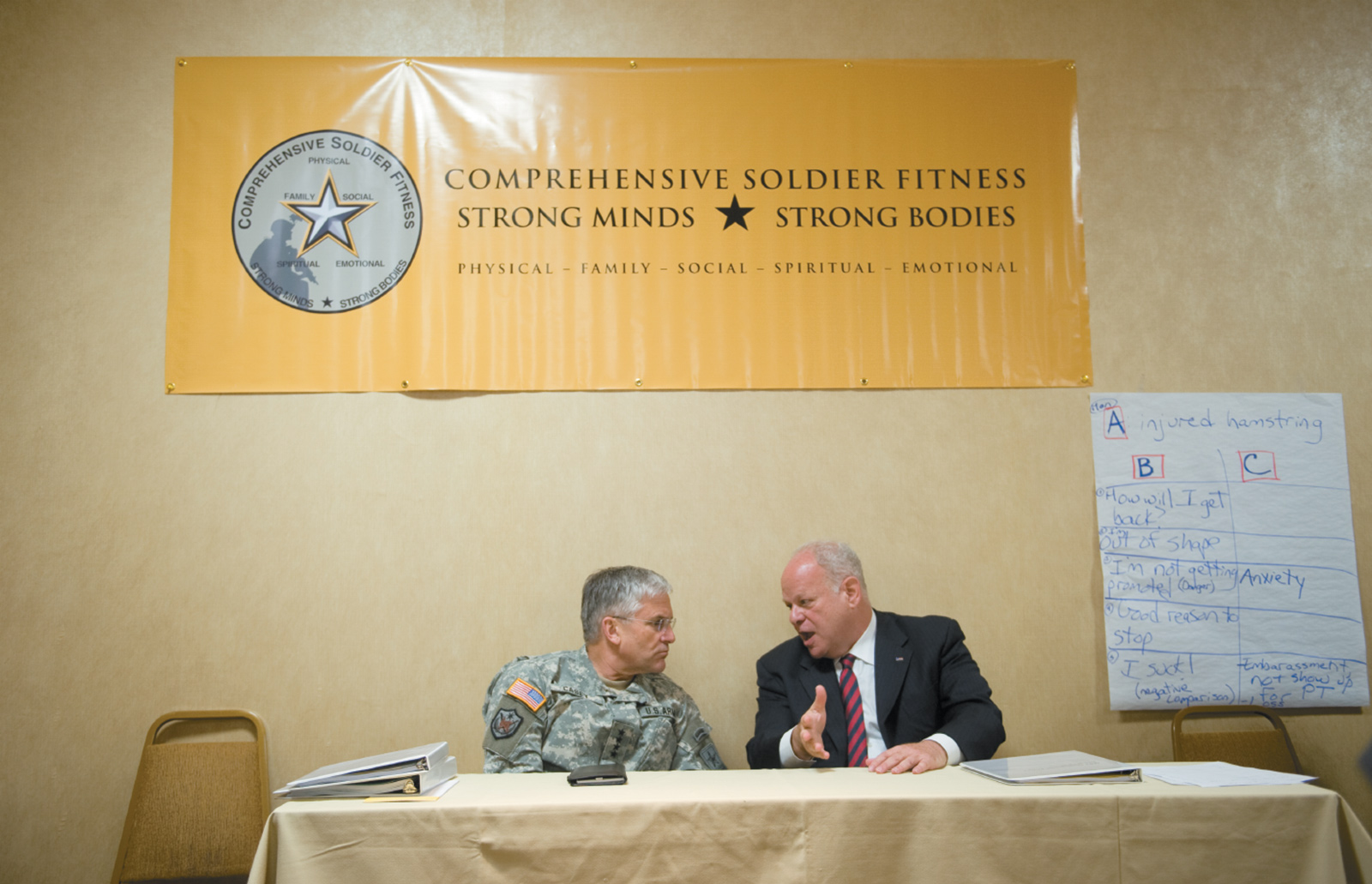
Academic and military psychologists have jumped on the CSF bandwagon
CSF is a non-consensual experiment. Dr. Seligman was put in charge of the military’s initial $125 million CSF program. Tens (possibly hundreds) of millions more have been awarded in grants. Soldiers are given no choice; and non-compliance carries the possibility of disciplinary sanctions. While CSF is not in the category “Torture,” U.S. soldiers are being denied the right to exercise their fundamental human right to “voluntary, informed consent” to research.
As this website documents, psychologists who collaborate with government have habitually demonstrated their inclination to exploit every opportunity to conduct research on involuntary, non-consenting human subjects who are not informed about potential foreseeable harms that may result.
“The point of drawing attention to the links between prominent figures in the field of moral psychology and the Positive Psychology movement is not to impute blame for torture where it does not belong, or to imply guilt by association with Seligman, but to ask the necessary questions about whether their approach to morality is conducive to the kind of rigorous moral self-reflection that both the authors of the Hoffman report and many APA members deem necessary.” (Tamsin Shaw, The Psychologists Take Power, New York Review of Books, 2016
Researchers & government officials avoid the explicit term “experiment”
Its advocates prefer the ambiguous term “study” when referring to research projects. Seligman described CSF as “the largest study psychology has ever been involved in.” And when Brig. Gen. Cornum who oversees the program was asked in an NPR interview whether CSF would be “the largest ever experiment,” he stated: “Well, we’re not describing it as an experiment. We’re describing it as training.”
No doubt, the reluctance to acknowledge the fact that CSF is a human experiment is because it is a non-consensual experiment; and is, therefore, in violation of cornerstone of The Nuremberg Code mandate: “the voluntary, informed consent of the human subject is absolutely essential.”
In their article, The Dark Side of “Comprehensive Soldier Fitness” (2011) Roy Eidelson, past president of Psychologists for Social Responsibility, and his co-authors Marc Pilsuk & Stephen Soldz, note that:
“Although its advocates prefer to describe Comprehensive Soldier Fitness as a training program, it is indisputably a research project of enormous size and scope, one in which a million soldiers are required to participate.”
They cite an article by Reivich, Seligman and McBride. Master resilience training in the U.S. Army. American Psychologist (2011 posted on the U Penn website) in which they confirm the experimental nature of CSF:
“We hypothesize that these skills will enhance soldiers’ ability to handle adversity, prevent depression and anxiety, prevent PTSD, and enhance overall well-being and performance” (p. 26, emphasis added).
Eidelson notes the fact that although “this is the very core of the entire CSF program, yet it is merely a hypothesis – a tentative explanation or prediction that can only be confirmed through further research.” They emphasize the importance of protecting individual freedoms:
“we should never forget that the velvet glove of authoritarian planning, no matter how well intended, is no substitute for the protected freedoms of individuals to make their own choices, mistakes, and dissenting judgments. Respect for informed consent is more, not less, important in total environments like the military where individual dissent is often severely discouraged and often punished.”
A detailed critical analysis of CSF raises serious methodological flaws that undermine its validity 
CSF is comprised of several functional components: (1) Global Assessment Tool (GAT) a psychometric instrument involving a 105-item computer questionnaire; (2) a series of “Comprehensive Resilience Modules” (CRMs); a 20-minute online learning presentation, interspersed with multiple-choice questions to test the trainee’s understanding of the material presented. Relatively little information has been made available about the CRMs. (3) “Master Resilience Training” (MRT) by positive psychologists, first, to become more resilient themselves, and to deliver resilience training to soldiers within their Army units. Resilience training is also integrated into general Army leadership training courses.
In addition to the troubling moral violations entailed in this coerced experiment, Nicholas Brown, a graduate student in the UK raised several fundamental questions about the applicability of PRP, a school-aged children’s resilience program, as the basis for the Comprehensive Soldier Fitness program:
(a) “whether a program based on resiliency training for school-aged children can hope to address the serious mental trauma, including PTSD, faced by soldiers deployed to war zones; (b) whether the instruments used to measure the performance of the program are reliable, valid, and appropriate for the circumstances in which they are being used, and (c) whether the design and delivery of the program takes sufficient account of the conflicting real-world demands placed on the individuals involved.” (Nicholas Brown. A Critical Examination of the U.S. Army’s Comprehensive Soldier Fitness Program, 2014)
Brown shows that the GAT questionnaire will always “reveal” that large numbers of soldiers are facing “significant challenges”- and, hence, “are deemed to be in need of further resilience training-by a process that appears to consist of circular reasoning.” And he notes an obvious issue that the designers of CSF neglected entirely; that is, the possibility (likelihood) that forced participation may have an effect on soldier’s responses in subjective psychometric tests.
Seligman’s promotional assertions about the success of PRP are not borne out by the evidence:
“PRP increased optimism and reduced depressive symptoms for up to a year. The program also reduced hopelessness and clinical levels of depression and anxiety. Additionally, the PRP worked equally well for children from different racial/ethnic backgrounds.”
In fact, the effectiveness of PRP remains doubtful & unproven Seligman was awarded a $31 million military grant for PRP, but the program has not been shown to be effective in a meaningful way under real-world conditions. The findings of a 2016 meta-analysis are discouraging:
“The effects of PRP on depressive symptoms have been inconsistent both across and within trials. There is considerable between-study variability in effects sizes. Two well-powered studies reported no effects on depressive symptoms.” (Steven Brunwasser & Judy Garber. Programs for the Prevention of youth Depression, J of clinical Child & Adolescent Psychology, 2016)
Similarly, a series of promotional reports by CSF grant recipients claim that CSF and the Master Resilience Training programs “work.” (Corman, Matthews, Seligman. Comprehensive Soldier Fitness, American Psychologist, 2011; Reivich, Seligman, McBride. Master Resilience Training, American Psychologist, 2011; Comprehensive Soldier Fitness Program Evaluation. Report #3, 2011)
Claims of CSF success are unsupported — neither by scientific nor empirical evidence. Indeed, as Nicholas Brown’s documented analysis demonstrates, CSF was initiated without any prior pilot study; with no control group to document, evaluate or compare its effects; nor is there any provision for follow-up to document the outcome of CSF “performance enhancement training.” Bluntly stated, CSF is an example of pseudoscience; it bears no relation to genuine science. CSF fails to adhere to basic scientific standards and lacks minimal scientific criteria for its evaluation. CSF was launched, requiring 1.1 million soldiers to be subjected to an uncontrolled experiment without prior validation of its (admittedly) hypothetical rationale nor the methodology used.
“Given the scale and ambition of CSF, it seems remarkable that no provision has been made for a substantial, long-term control group to allow the outcomes of the training interventions to be properly evaluated, and that no meaningful form of pilot testing was conducted to see whether the various components of the program had measurable effects.
According to Seligman (2011a, p. 163), this is a consequence of a personal decision taken by Army Chief of Staff Gen. George Casey that CSF was to be applied to every soldier, without exception, and as soon as possible.” (Brown, A Critical Examination of the US Army’s CSF Program, 2014)
Reality: U.S. soldiers & veterans are in the throes of a spiraling mental health crisis
 Soldiers’ real life wrenching traumatic experiences cause them deep emotional anguish. For many soldiers, combat horrors awakens questions regarding the meaning of life and persistent doubts about the value of living. These troubling human issues are not addressed by any component of the Comprehensive Soldier Fitness resilience protocol. Indeed, there is no meaningful component in the CSF program that is devoted to helping soldiers grapple with the battle traumas they have experienced.
Soldiers’ real life wrenching traumatic experiences cause them deep emotional anguish. For many soldiers, combat horrors awakens questions regarding the meaning of life and persistent doubts about the value of living. These troubling human issues are not addressed by any component of the Comprehensive Soldier Fitness resilience protocol. Indeed, there is no meaningful component in the CSF program that is devoted to helping soldiers grapple with the battle traumas they have experienced.
U.S. veterans seek solace in mind numbing drugs, alcohol, and thousands who commit suicide. A new VA suicide study (2016) includes more than 50 million veterans’ records from 1979 to 2014, including every state found that 20 veterans commit suicide each day.
The data, compiled over the last four years, also comes from the Centers for Disease Control
“In 2014, the latest year available, more than 7,400 veterans took their own lives, accounting for 18 percent of all suicides in America. Veterans make up less than 9 percent of the U.S. population”.
Researchers found that the risk of suicide for veterans is 21 percent higher when compared to civilian adults. From 2001 to 2014, as the civilian suicide rate rose about 23.3 percent, the rate of suicide among veterans jumped more than 32 percent. Together, the numbers point to a significant mental health risk for individuals who served in the military, though the specific reasons remain unclear. (Read New VA Study finds 20 Veterans Commit Suicide Each Day, Military Times, 2016)
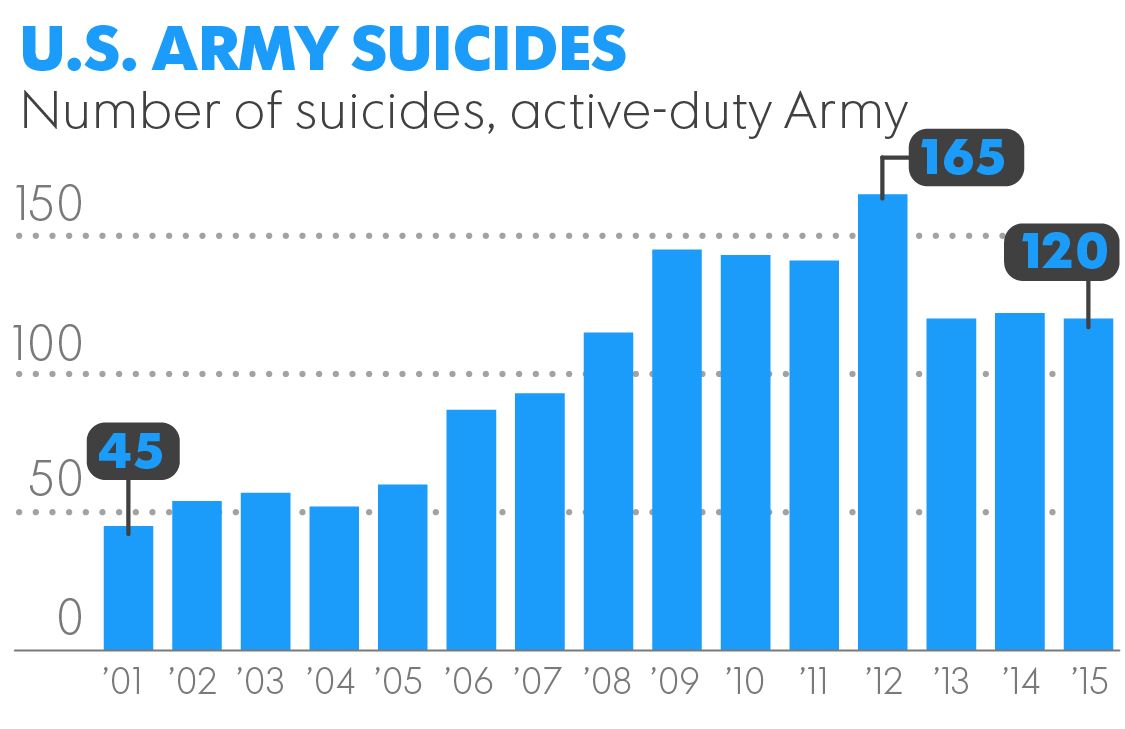
Enduring truths: grandiose psychological engineering experiments lack a scientific basis & cause harm.
As early as 1925, John Watson, a proponent of psychological behaviorism seriously declared:
“Give me a dozen healthy infants, well-formed, and my own specified world to bring them up in, and I’ll guarantee to take any one at random and train him to become any type of specialist I might select — doctor, lawyer, artist, merchant-chief, and yes even beggar-man and thief, regardless of his talents, penchants, activities, vocations and race of his ancestors.” (Johns Hopkins Magazine, 2000)
We conclude this post with an excerpt from Professor Noam Chomsky’s scathing critique of B.F. Skinner. Chomsky dismissed BF Skinner as a “behavioral technologist” who “confused science with terminology.” We believe that Chomsky’s critique applies equally to Skinner’s torch bearing successors; psychologists aligned with “positive psychology” — which is but “psychological behaviorism” repackaged under a revised terminology. Leading positive psychologists, contracted by the military, exploit soldiers’ subordinate status to apply their experimental technologies of behavior en masse.
“He appears to be attacking fundamental human values, demanding control in place of the defense of freedom and dignity. There seems something scandalous in this, and since Skinner invokes the authority of science…His speculations are devoid of scientific content and do not even hint at general outlines of a possible science of human behavior.”
“There is little doubt that a theory of human malleability might be put to the service of totalitarian doctrine. If, indeed, freedom and dignity are merely the relics of outdated mystical beliefs, then what objection can there be to narrow and effective controls instituted to ensure “the survival of a culture”?
In view of the prestige of science and the tendencies toward centralized authoritarian control which can easily be detected in modern industrial society, it is important to investigate seriously the claim that the science of behavior and a related technology provide the rationale and the means for control of behavior…
The public may well be deceived, in view of the prestige of science and technology. It may even choose to be misled into agreeing that concern for freedom and dignity must be abandoned, perhaps out of fear and a sense of insecurity about the consequences of a serious concern for freedom and dignity. The tendencies in our society that lead toward submission to authoritarian rule may prepare individuals for a doctrine that can be interpreted as justifying it… (Chomsky. The Case Against B.F. Skinner, New York Review of Books, 1971)





